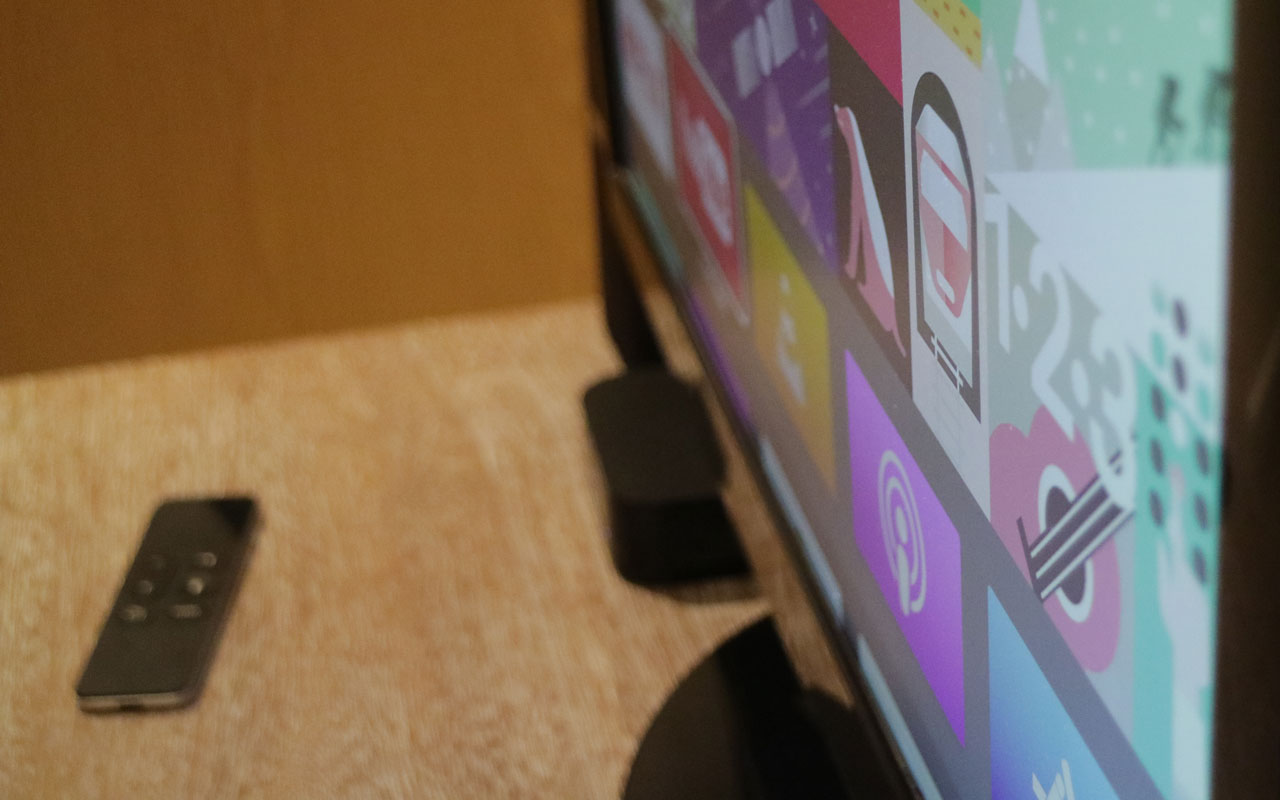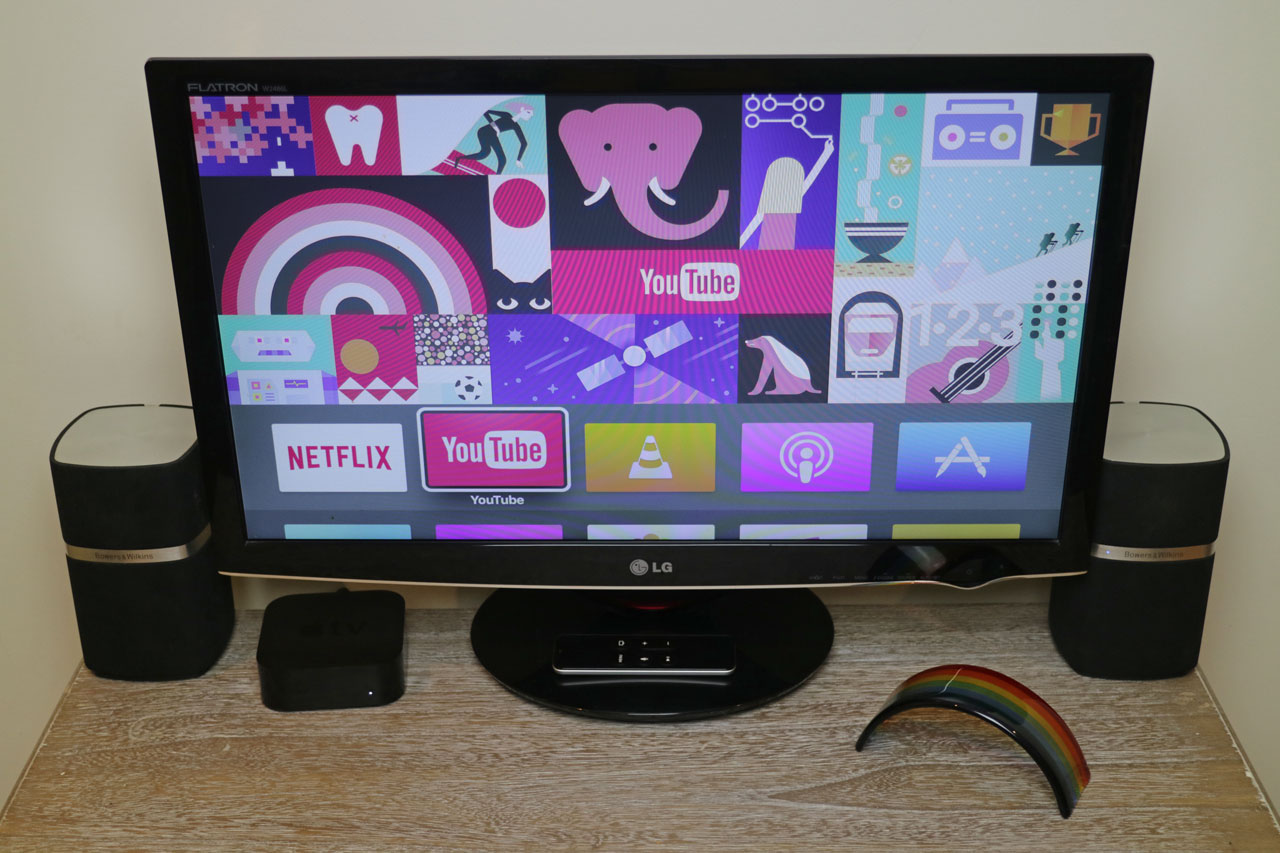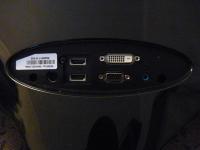LG W2486L 24″ LED Monitor Reviewed

Face it, LCD monitors have been boring for years and the phrases “high contrast” and “2ms” just aren’t enough to wake me from plain ignoring them. However, recently someone out there in gadget world woke up and decided it was time to start implementing thin LCD display technologies into desktop monitors where, although space may not be at a premium, people are certainly interested in stylistic improvements, energy efficiency and less excess heat.
The LG W2486L delivers finger-thinness, a decent picture, an excellent array of inputs, audio pass-through and more in a very stylish 24″ package that can’t fail to impress.
Update: Almost 7 years later.

Whew. Okay. Wow. It’s been nearly 7 years since I wrote this review. First off, oh my. My photos are embarrassing. Just. Awful. I’m sorry about that. Second, in exchange for a donation to a charity of my choice, LG actually let me keep this monitor. I thought it was a fabulous idea at the time and jumped at it.
I still have this monitor. It’s sitting on my desk right now, moved to conduct some testing of a USB-C to HDMI adapter. It’s still going strong, and I use it on a daily basis hooked up to my Apple TV for… well… watching TV. Yes 24″ is a teeny TV but darnit, I grew up with a black and white one, so it’s a luxury! The HDMI->3.5mm audio jack feature means I can hook up some bookshelf speakers and actually have a really nice, tidy setup.

After 7 years of abuse, including moving three times and being lugged to and from work a few, too, it’s still going strong. You did good, LG.
I have a few boxes which need to be ticked to really garner my interest about LCD monitors these days. First and foremost is good looks, even over and above features I’m keen to have any product which is dominating a desk look tip top, next I typically want a good compliment of inputs, USB hub, good handling of gradients and a way of getting audio out (from consoles) to a decent pair of speakers.
Looks

Stylistically the LG W2486L LED Monitor hits the spot, with very few complaints. Where it really misses the mark, and incidentally the Samsung LED monitor I’ve got in at the moment is the same, is in its bezel. It’s not width that’s the problem, but rather depth. I know it’s a tall order to complain about depth (which equates to thickness) on ultra thin LED monitors but it seems that they have a 4-5mm inset in which the display itself is set. This seems unusually deeply set for a TFT screen and I would much, much prefer a flush front panel because it looks better and is easier to clean. There are probably technical issues surrounding this aesthetic shortfall, clearly a glass front is out of the question as it alienates a large group of potential customers but there must be some way of making the screen flush, or close to, the bezel.
The LG W2486L otherwise looks tip-top, edging out the oddly styled Samsung XL2370 with good clean edges, a tasteful touch of silver, and a hint of burgundy on the “neck” which is reflected in the solid and reassuringly weighty base.
Features
Conspicuously missing from the LG W2486L but present upon my list of wants for a desktop monitor is a powered USB hub. It doesn’t have media card readers, either, but I’m less worried about those. A USB hub is pretty much a requirement for replacing my general work monitor (an ageing Dell 2407WFP) which is used as a kind-of dock. My keyboard and mouse are generally permanently plugged into the monitor, and my laptop gets “docked” to the display port/USB connections. Lack of USB makes the purchase of an additional USB hub necessary, and this in turn necessitates and additional, but unavailable, power socket.
Present, however, is audio pass-through which is a feature that should come high on the list of any HDMI capable games console owner planning to use the LG W2486L in their bedroom or student accommodation with both a desktop/laptop and one or more games consoles hooked up. Note that the audio pass-through only works with the HDMI ports of which there are to, conveniently exactly the right number to hook up both a PS3 and Xbox 360 with the DVI port spare for a gaming PC. Suffice to say, one or two of these LG monitors would make for an excellent gaming setup, having a secondary monitor which can be switched between the desktop PC and games consoles would be a luxury- sadly I’ve long given up on gaming PCs so such an all-inclusive gaming setup is not on the cards for me.
Anyway! The audio pass-through will convert your HDMI audio source into a 3.5mm audio out jack on the monitor itself, you can use this to easily hook up the monitor either directly into its own set of speakers, or into your PC sound-card for mixing and playing on whatever sound system you might have connected to your PC. Alternatively you can just keep a pair of headphones plugged in for discrete gaming sessions.
Inputs

I’ve already mentioned the decidedly nice array of inputs on the LG W2486L but it can’t hurt to re-iterate them. Two HDMI ports, a DVI port and a VGA port make for a very well rounded compliment of inputs that will have your monitor easily hooked up to a PS3, Xbox 360, PC and, dare I say, an iPad or a Netbook, or perhaps an older Xbox 360, or whatever other VGA devices you might have knocking about.
Such a good complement of inputs is often only present on the higher end of displays, but at about £240 from Savastore.com this particular LG monitor is about half the regular higher end price tag. Of course, it doesn’t boast an IPS panel, picture-in-picture support or Component/Composite inputs but those aren’t quite as necessary as HDMI and a good audio pass-through.
Picture
Backlight distribution is even, but the display has a fairly poor vertical viewing angle making it not such a great candidate for the round-the-house coffee table monitor I’d want it to be. There are presets for movie, internet, normal and user settings which make some pretty significant differences to the picture that, for normal desktop use, are unbearably bright and slightly wishy washy.
The OSD grants access to automatic brightness, but you’ll probably want to keep this turned off even though it does a fairly admirable job of adjusting the backlight. I tend to have no problem finding a backlighting level that’s comfortable both with the lights on and off.
The OSD also includes a “FUN” mode which, perplexingly, has its own dedicated button and grants access to completely useless nonsense (probably designed to show off the image processing engine in the display) like Gaussian blur, monochrome and sepia picture filters.
There’s also a strange “EZ Zoom” option which yields a message “PLEASE CHECK THE FORTEMANAGER”, I’ve no idea what that means and no inclination to find out as the entire “FUN” menu is a simply baffling collection of nonsense. If they wanted it to actually be useful then “FUN” would be a 1-button colour invert + backlight reduction for night viewing/text reading- but, hey, when was “FUN” ever supposed to be useful?
With the contract jacked up the display can achieve a reasonable level of black detail at the expense of regular computing fidelity, if you’re going to watch movies then making liberal use of the presets is advised. On a straight-up greyscale colour banding test I found a Contrast of 70, a Brightness of 80 and a Gamma of 0 achieved the best results, really rather good results in fact apart from in the darkest areas. This achieves uniform and almost unnoticeable banding on colour gradients, but this does mean you’ll have to calibrate the display right out of the box for best results.
I’m using a MacBook Pro to conduct tests, and the worst culprit for showing up banding issues is the greyscale cloud-like backdrop of a suspended Parallels 5 virtual machine. It still looks better on the laptop display, but the above settings yielded the best and most balanced image- I say ‘best’ but it’s still very noisy on both displays.
Overall
As a final touch, both VGA and DVI cables are supplied which is a pleasant surprise as these used to be commonly-skimped-upon accessories. The power cable is a regular kettle-lead which plugs into a transformer to deliver the displays conservative share of power via a nice, discrete and thin cable. Unfortunately there’s no cable tidy hole in the base where something to keep the power cable in check would have been appreciated.
Other neat touches include backlit, touch sensitive controls which light up when you move your finger near them and dim when they’re not used. Unfortunately the LEDs are a little redundant, as grey text is silkscreened onto the front of the monitor anyway and the LEDs do absolutely nothing to make it easier to see.
The power light is obnoxiously bright but there’s an option in the OSD to turn it off. The OSD is otherwise thin on the ground, containing the usual Brightness/Contrast/Gamma settings alongside colour settings and signal settings for the VGA.
It’s probably one of the best monitors you can get for an Xbox 360, PS3 and PC gaming triathlon and the picture quality is more than enough to make gaming and movie watching comfortable. Graphic artists will come away happy enough with 80 Brightness and 70 Contrast, but the most discerning of individuals will probably still want to hug their IPS panels tightly… as long as they’re not tinted slightly yellow, ha!
Would I buy one? Yes! I’m even contemplating grabbing a USB hub and using one of these sleek beauties to replace my work display, which is really starting to show its age and flicker incessantly on certain shades of grey.